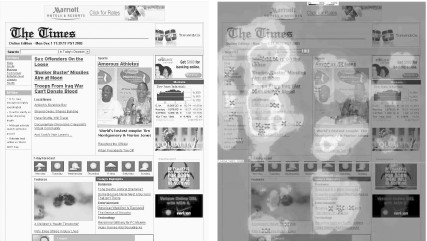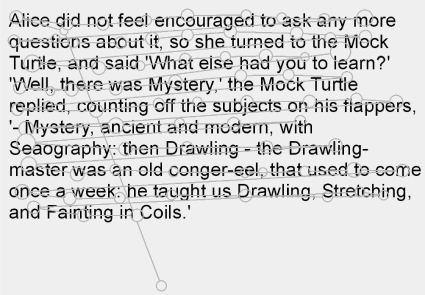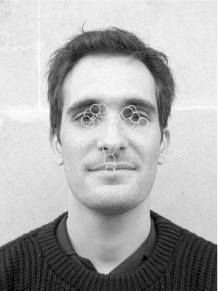Hack15.To See, Act
|
Hack 15. To See, Act
Think of perception as a behavior, as something active, rather than as something passive. Perception exists to guide action, and being able to act is key to the construction of the high-resolution illusion of the world we experience. The other hacks in this chapter could give the impression that seeing is just a matter of your brain passively processing the information that comes in through the eyes. But perception is far more of an active process. The impression we have of the world is made up by sampling across times, as well as just by sampling across the senses. The sensation we receive at any moment prompts us to change our head position, our attention, maybe to act to affect something out in the world, and this gives us different sensations in the next moment to update our impression of the world. It's easier for your brain to take multiple readings and then interpolate the answers than it is to spend a long time processing a single scene. Equally important, if you know what you want to do, maybe you don't need to completely interpret a scene; you may need to process it just enough to let you decide what to do next and in acting give yourself a different set of sensations that make the scene more obvious. This school of thought is an "ecological" approach to perception and is associated with the psychologist J. J. Gibson.1 He emphasized that perception is a cognitive process and, like other cognitive processes, depends on interacting with the world. The situations used by vision scientists in which people look at things without moving or reaching out to touch them are extremely unnatural, as large as the difference between a movie at the theater directed by someone else and the freewill experience of regular real life. If you want people to see something clearly, give them the chance to move it around and see how it interacts with other objects. Don't be fooled into thinking that perception is passive. 2.4.1. In ActionOne example of active vision that always happens, but that we don't normally notice, is moving our eyes. We don't normally notice our blind spots [Hack #16] or our poor peripheral vision [Hack #14], because our gaze constantly flits from place to place. We sample constantly from the visual world using the high-resolution center of the eyethe foveaand our brain constructs a constant, continuous, consistent, high-resolution illusion for us. Constant sampling means constant eye movement: automatic, rapid shifts of gaze called saccades. We saccade up to five times a second, usually without noticing, even though each saccade creates a momentary gap in the flow of visual information into our brains [Hack #17] . Although the target destination of a saccade can be chosen consciously, the movement of the eyes isn't itself consciously controlled. A saccade can also be triggered by an event we're not even consciously aware ofat least not until we shift our gaze, placing it at the center of our attention. In this case, our attention's been captured involuntarily, and we had no choice but to saccade to that point [Hack #37] . Each pause in the chain of saccades is called a fixation. Fixations happen so quickly and so automatically that it's hard to believe that we don't actually hold our gaze on anything. Instead, we look at small parts of a scene for just fractions of a second and use the samples to construct an image. Using eye tracking devices, it is possible to construct images of where people fixate when looking at different kinds of objectsa news web site, for instance. The Poynter Institute's Eyetrack III project (http://www.poynterextra.org/eyetrack2004/) investigates how Internet news readers go about perusing news online (Figure 2-3) and shows the results of their study as a pattern of where eye gaze lingers while looking over a news web site. Figure 2-3. The pattern of eye fixations looking over a news web site; the brighter patches show where eyes tend to fixate2 Part of developing speed-reading skills is learning to make fewer fixations on each line of text and take in more words at each fixation. If you're goodand the lines are short enoughyou can get to the point of one fixation per line, scanning the page from top to bottom rather than side to side. Figure 2-4 shows typical fixation patterns while reading. Figure 2-4. A typical pattern of eye fixations when reading3 Figure 2-5 shows a typical pattern of what happens when you look at a face. You fixate enough to get a good idea of the shape of the whole face with your peripheral vision, fixating most on those details that carry the most information: the eyes. Figure 2-5. A pattern of fixations over 8 seconds when looking at a face (Matt's, in this case)4 2.4.2. End Notes
2.4.3. See Also
|
|
EAN: N/A
Pages: 159